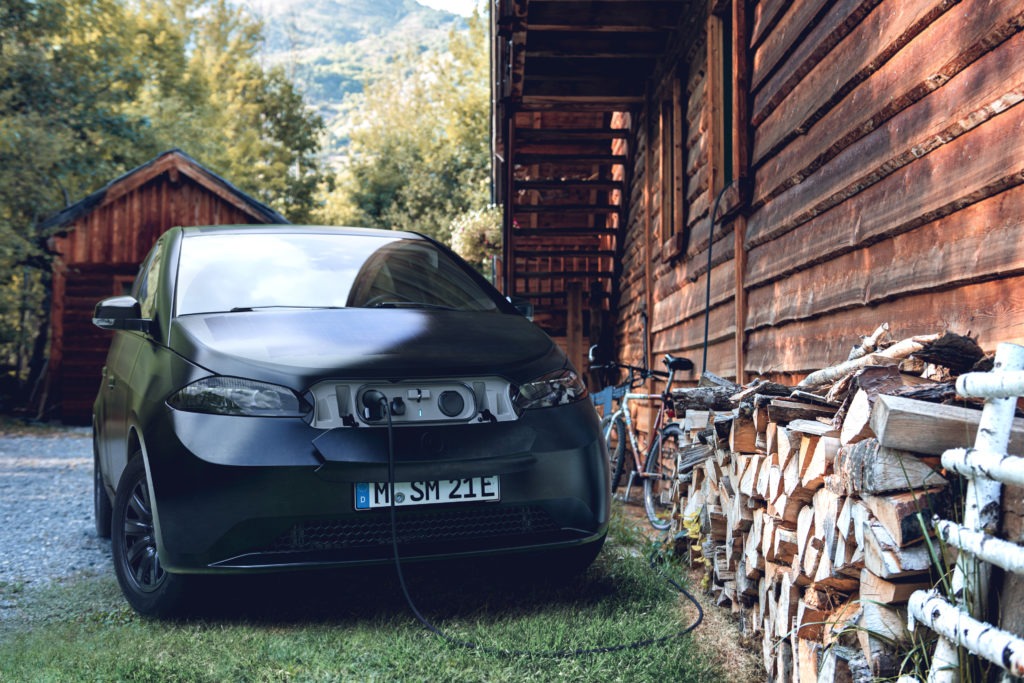Are EVs as green as they seem?
27 April 2021

The last year has been dominated by a single health emergency that brought the world to its knees. But for decades, scientists and campaigners have been warning of another impending crisis. As governments put environmental regulations in place, carmakers are transitioning into clean mobility companies. Spearheading this change, electrically-chargeable vehicles (EVs) appear poised to take the helm from internal combustion engines (ICEs). But for this handover to work, these electric models must prove to be environmentally advantageous. Autovista24 Journalist Tom Geggus asks, are EVs as green as they seem?
According to the European Commission, passenger cars are responsible for around 12% of total EU CO2 emissions, putting the automotive industry in the green spotlight. A poll of 15 European cities recently revealed nearly two-thirds of urban residents back a ban on the sale of new petrol and diesel cars by 2030. OEMs and mobility providers are also supporting a faster transition to zero-emission transport. Volvo Cars, Uber and LeasePlan are among a group of companies calling for an end date to new combustion car purchases in Europe no later than 2035. This would leave a large ICE-sized hole for EVs to plug. But considering its entire lifetime, is an electrified vehicle that much cleaner than a petrol or diesel-powered one?
Significantly smaller footprint
Published in March last year, research from the universities of Cambridge, Exeter and Nijmegen showed that in 95% of the world, an electric car has a significantly smaller carbon footprint than one powered by fossil fuels. Dr Florian Knobloch, University of Cambridge fellow, German Federal Ministry policy advisor, and the paper’s lead author, spoke with Autovista24 about the findings.
The academic team carried out extensive life-cycle assessments of emissions produced through vehicle use, as well as production and waste processing. ′When you look at the production stage, it takes significantly more energy and material input due to the battery,’ Dr Knobloch said. But the EV then makes up for this larger burden across its entire lifetime thanks to far lower running emissions.
′It is a myth that electric cars do increase emissions, even on a lifetime basis,’ he said. ′In most parts of the world already, today EVs will decrease emissions, even if you factor in everything from production to recycling.’
′A snowball effect’
When dividing the world into 59 regions, the research revealed that in 53, electric cars are already less emissions-intensive than one powered by petrol or diesel. These regions include Europe, the US and China. In fact, lifetime emissions from EVs were found to be 70% lower than petrol cars in countries like France and Sweden, where large amounts of electricity are generated through renewable and nuclear sources. However, the same cannot be said for counties like Poland, where dependence on coal-fuelled power stations lingers.
But as grids worldwide are rewired with decarbonisation in mind, even these regions will see more reason to go electric. So, as EVs become increasingly efficient, they will outstrip ICEs which have already reached near-peak efficiency. Dr Knobloch points out that even with the inclusion of greener technology like biofuels, there is little chance for the carbon footprint of ICE vehicles to greatly improve.
This transition to electromobility does take time. Confidence in EVs still needs to build up: from the early adopters to the mainstream. ′Every EV you buy now increases the chance of more EVs being bought in the future,’ Dr Knobloch explained. As consumers are exposed to an increasing number of EVs, a snowball effect will take place with confidence growing alongside adoption, encouraging more people to take the electric leap. The study projects that globally, half of cars on average could be electric by 2050. This would lower global CO2 emissions by up to 1.5 gigatons annually.
A comparative tool
In Europe, clean-transport campaign group Transport and Environment (T&E), found that electric cars emit on average almost three times less CO2 than their ICE equivalent. Again, this figure considers wider impact, including the sourcing of battery materials, electricity production, and even power-plant construction. To illustrate the difference between the lifetime emissions of EVs and ICEs, T&E created a tool to compare drive types, considering the year of purchase, vehicle type and location, as well as electricity used for battery production.
Lucien Mathieu, manager overseeing road vehicles and e-mobility analysis at T&E, spoke with Autovista24. As the tool’s creator, he explained it aims to combat other bias analysis of electric-car emissions, that might rely on outdated data, particularly given the rapid advance of EV technology. Using the most up-to-date information, T&E’s tool reveals CO2 emissions per kilometre, as well as in tonnes over lifetime.
For example, comparing two medium-sized cars bought in 2020, T&E’s tool reveals the electric car, on average, is responsible for 90 grammes of CO2 per kilometre versus petrol with 253 grammes. Considering tonnes of CO2 over distance driven, the EV’s ′carbon debt’ from production is paid off quite quickly thanks to its low-usage emissions. This compares starkly to an ICE car, which is far less efficient when converting its fuel into movement.
This canyon between EV and ICE only looks set to grow as battery technology continues to advance, while fossil-fuel cars have already achieved close to their peak efficiency. A T&E study recently calculated that an EV battery uses 30 kilograms of raw materials with recycling, compared to the 17,000 litres of petrol burned by the average car.
′The valuable minerals mined to make electric-car batteries will be used and reused unlike those of oil,’ said Greg Archer, UK director of T&E. ′Over its lifetime, an average-engined car would burn through a stack of oil barrels, 25 storeys high, creating about 40 tonnes of CO2 and worsening global warming. In comparison, only 30 kilograms of metals would be lost each time an electric-car battery is recycled – roughly the size of a football.’
This gap will increase as advancements drive down how much lithium is needed to make a battery by half over the next decade. Cobalt will drop by over three-quarters and nickel by around a fifth. So, as EVs develop, T&E plans to keep their tool updated with the latest available evidence, as well as expanding its scope to include plug-in hybrids (PHEVs). But of course, EVs also benefit from technologies developing outside of their own powertrains.
Powering vehicles
At the end of last year, more than 3,500 European power companies, represented through the federation for the European electricity industry, Eurelectric, came out in support of a minimum 55% reduction in greenhouse gas emissions by 2030. As more electricity generators and distributors throw their weight behind cleaner-energy solutions, including the use of more renewables, EVs can be expected to become greener.
Speaking with Autovista24, Petar Georgiev, climate and E-mobility lead at Eurelectric, pointed to a larger picture when considering the energy behind EVs. ′You do have to keep in mind what the actual carbon footprint is in different countries, at different times, and also how it is changing, because for us in the power sector, we clearly see that the grid is becoming cleaner and cleaner,’ he said. ′But if we have to wait to have a fully renewable grid, and then only start to integrate renewables, that would probably be a very big mistake.’
Because an EV’s CO2 levels can be lowered long before its first charge, it makes sense to take a holistic approach to EV emissions and electricity usage. For example, manufacturers can opt for more efficient production methods, even incorporating renewables into the process. Furthermore, which cars plug into electromobility will be hugely important.
Eurelectric recently identified the electrification of Europe’s vehicle fleets as a ′catalyst for clean mobility throughout the 2020s.’ The continent’s fleet is made up of 63 million cars, vans, buses, and trucks, operated by private companies or public authorities. The federation explained, however, that despite only making up 20% of the parc, these vehicles account for 40% of all kilometres travelled. They also account for 50% of CO2 emissions from transport. ′Electrification of car fleets can be a real game-changer,’ Kristian Ruby, secretary-general of Eurelectric said. ′It comes with tangible reductions of total costs of ownership and CO2 emissions. So, it is a good deal both for fleet owners and society at large.’
While the electrification of vehicles contains the potential to reduce CO2 emissions dramatically, it is enormously dependent upon usage. So, when asked, ′are EVs as green as they seem?’ the answer is yes, but adoption rates will determine their success.



